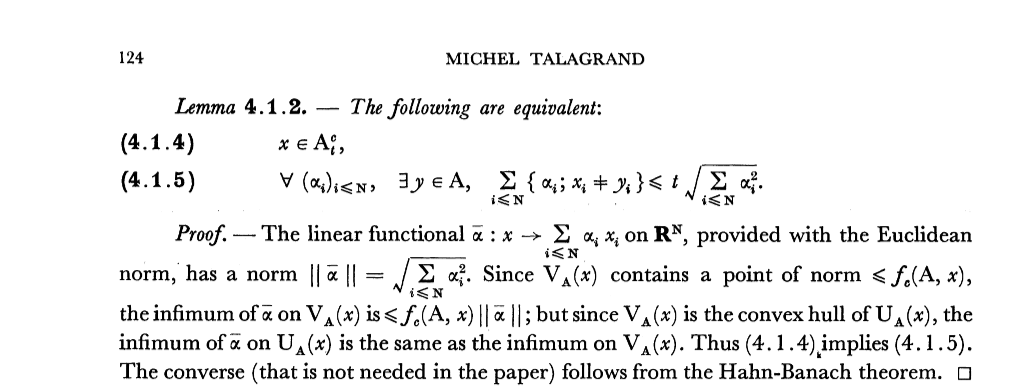I am trying to understand the proof of Lemma 4.1.2 in Michel Talagrand's publication from 1995 on concentration inequalities (see below for the precise question statement):
A bit of context: Talagrand fixes a point $x\in X$ (he uses the notation $X=\Omega$) and a subset $A\subset X$, where $X=X_1\times X_2\times\dots X_n$ is the product space of arbitrary non-empty sets $X_1,\dots, X_n$. The $\alpha_i$ and $t$ are all supposed to be positive real numbers. He defines $A_t^c$ as follows:
My question. I understand why (4.1.4) implies (4.1.5). However, Talagrand says that "the converse follows from the Hahn-Banach theorem". How does it follow from the Hahn-Banach theorem?
Note: The problem can be slightly reformulated by saying that we want to prove that for $t>0$ and all $M\subset\{0,1\}^n$, we have that whenever $$\text{for all }\alpha\in]0,\infty[^n, \text{ there exists a } m\in M \text{ such that } \langle \alpha, m \rangle \le t\lVert \alpha\rVert_2,$$ then
$$\min_{m \in \text{Convex hull of } M} \lVert m \rVert_2 \le t.$$
In fact, if somebody can show this, then I will be able to prove the conjecture formulated by me yesterday.


